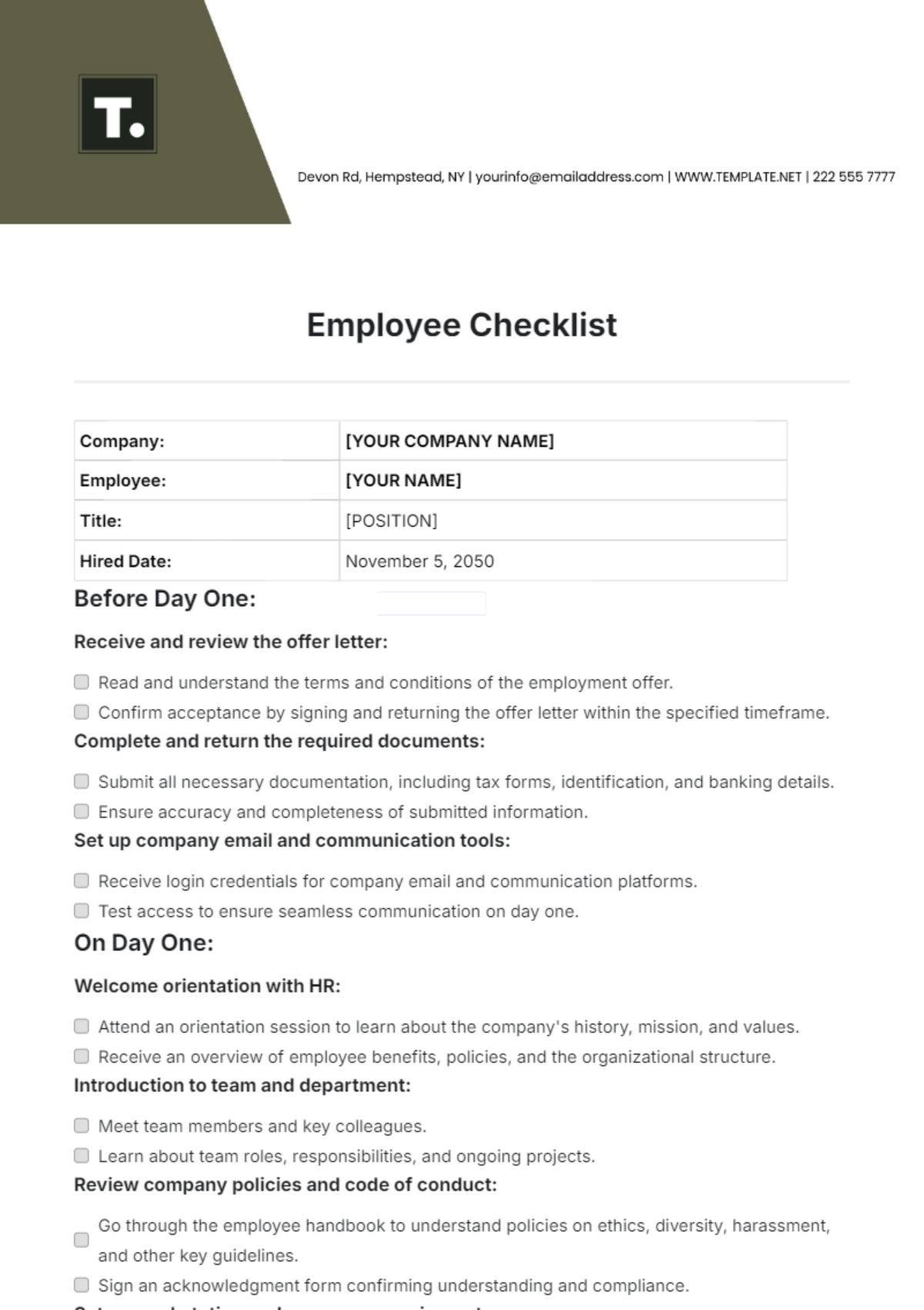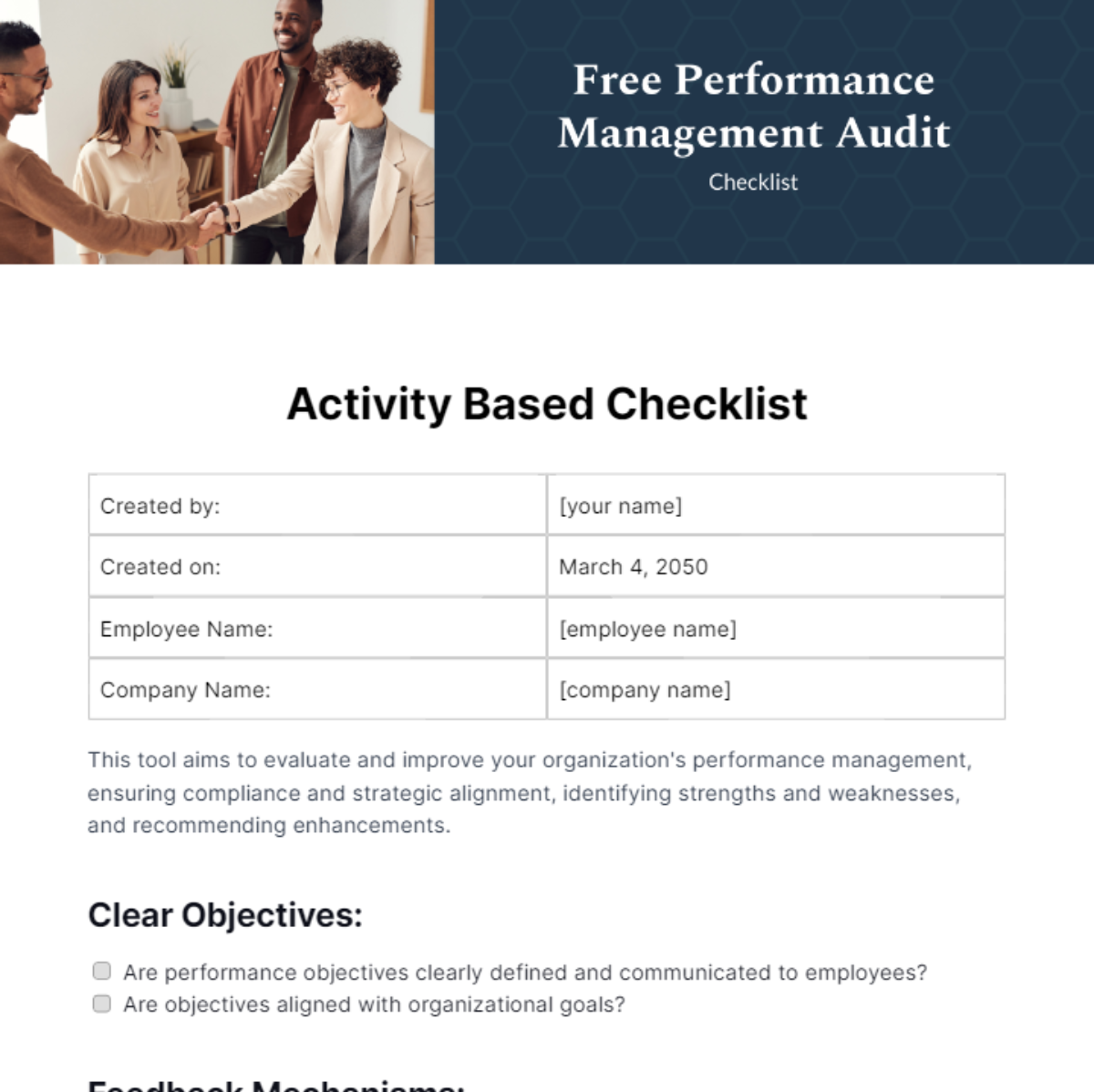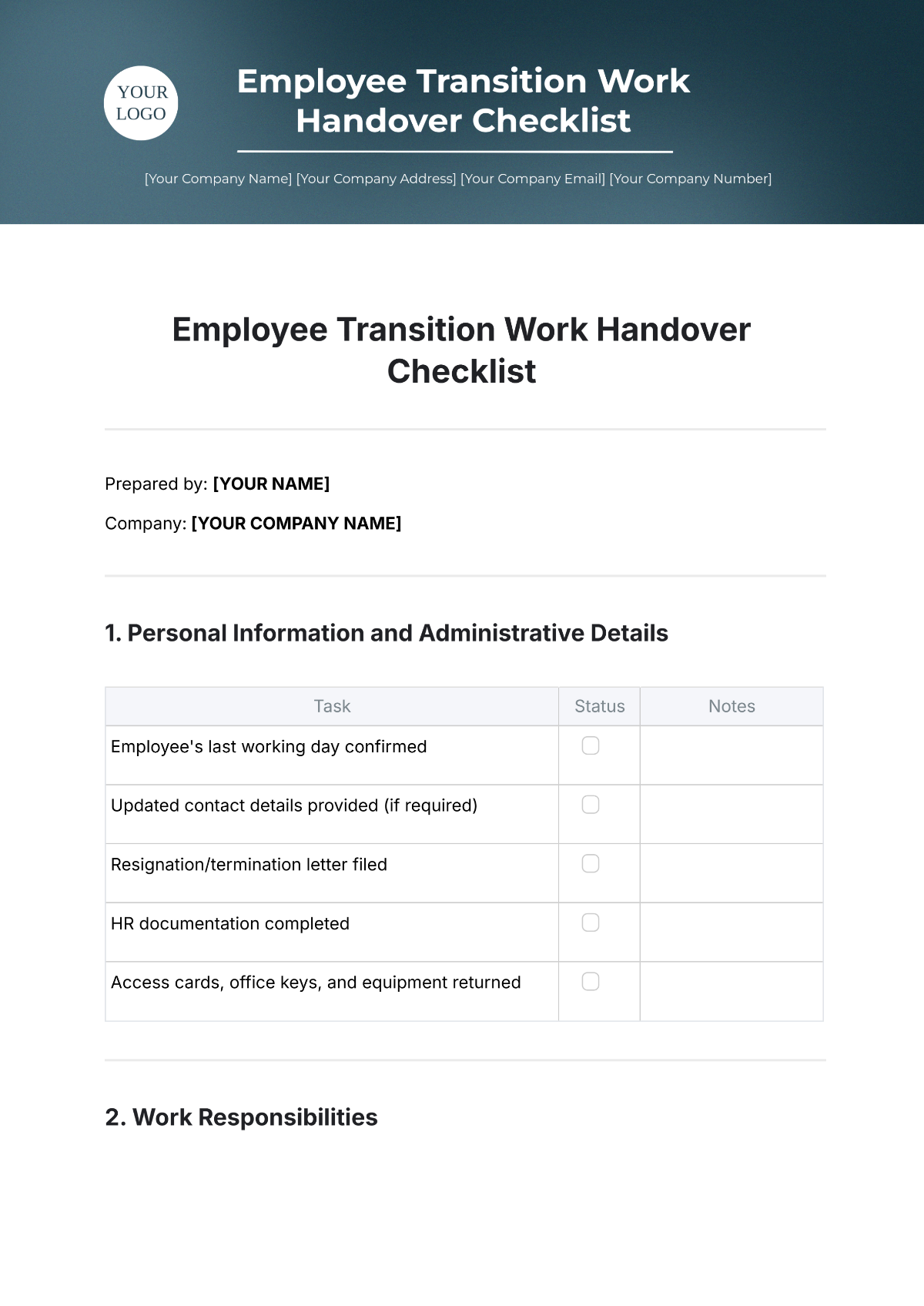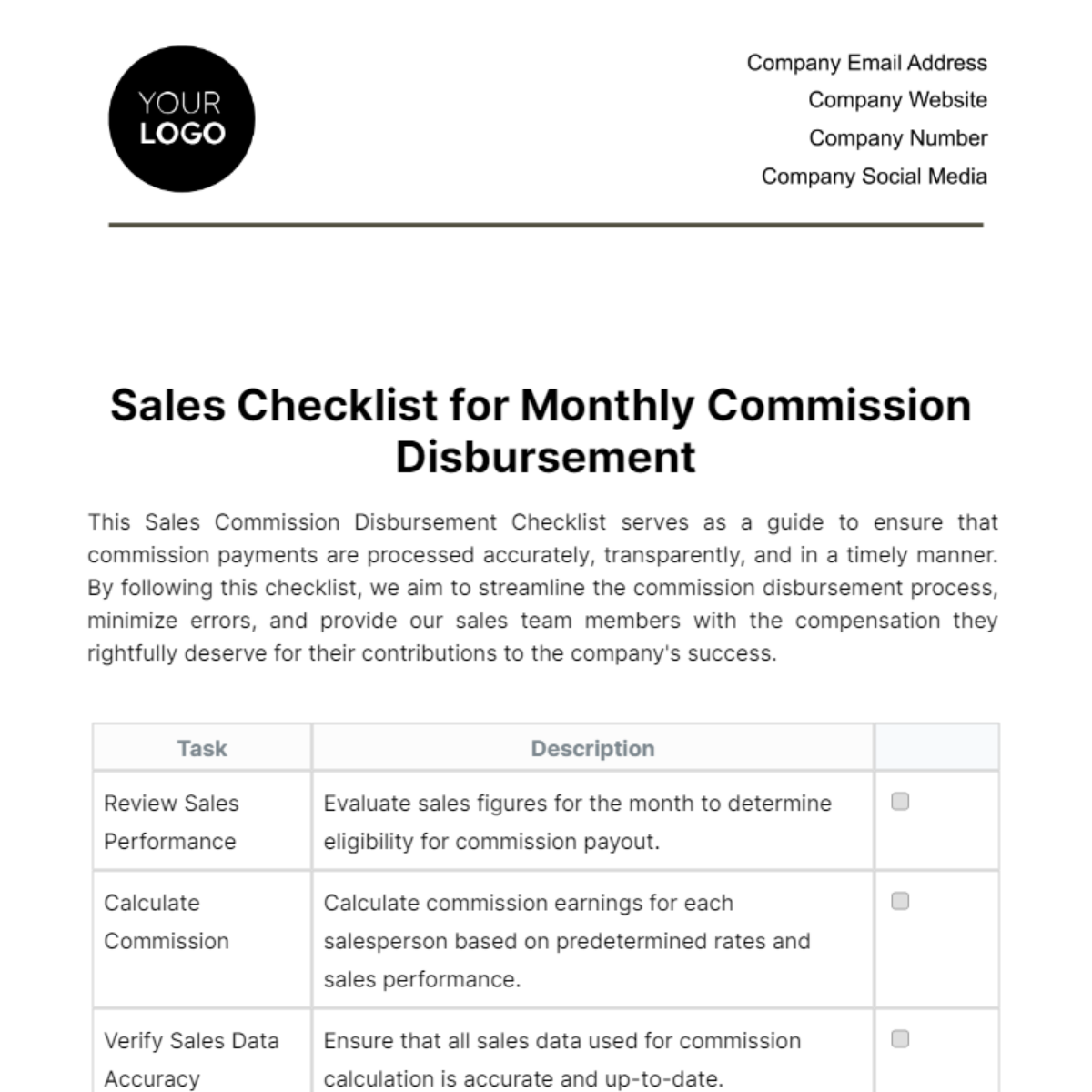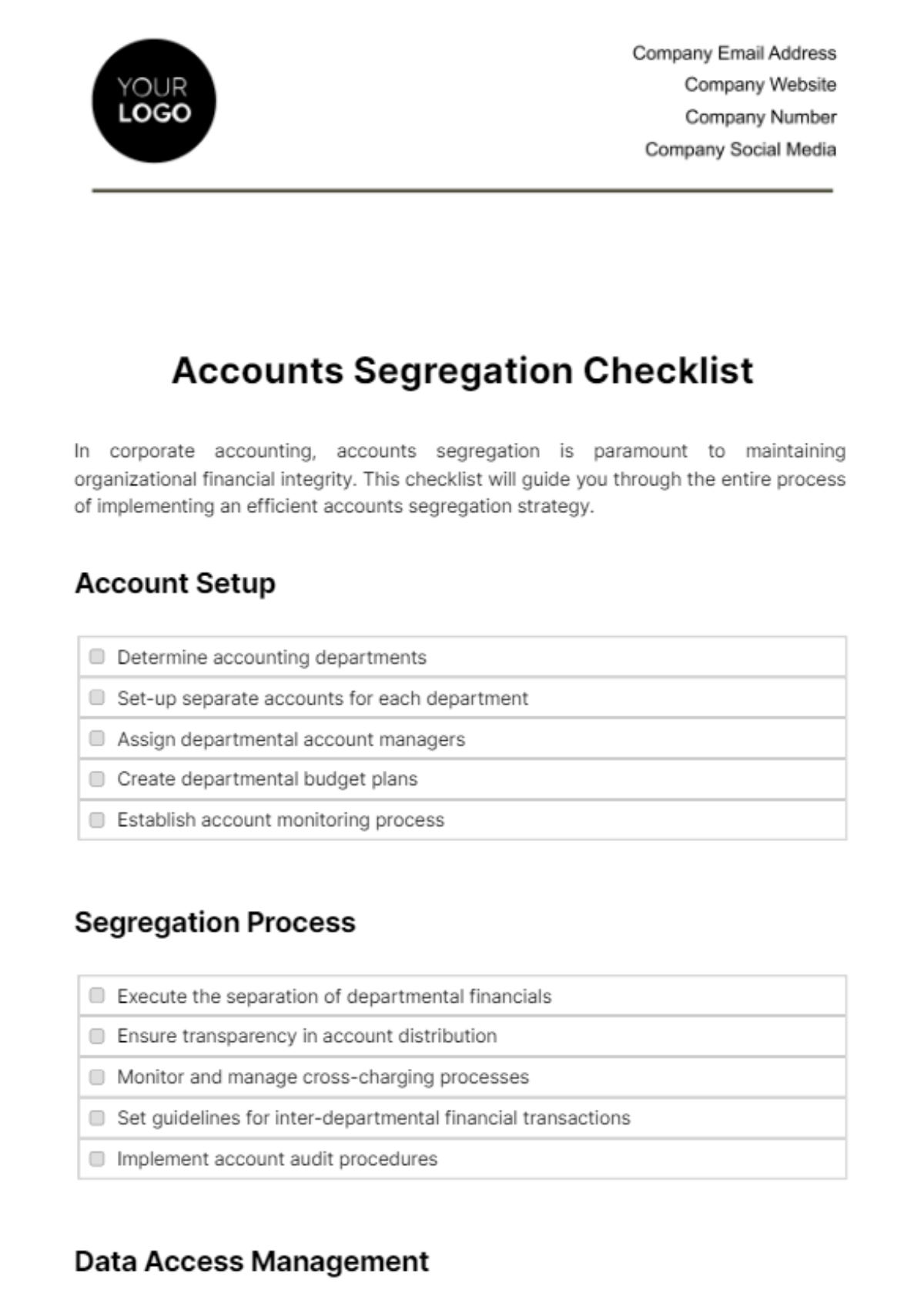Accounting Due Diligence Protocol
This checklist is designed to assist in conducting thorough accounting due diligence for business acquisitions, mergers, or financial transactions. By meticulously examining financial records and accounting practices, potential risks and opportunities can be identified to make informed decisions.
Instructions:
Use this checklist to systematically review accounting documents and procedures. Tick the checkboxes as you complete each item to track progress.
Objectives:
Evaluate the accuracy and reliability of financial information.
Identify potential financial risks and liabilities.
Assess the effectiveness of internal controls and accounting procedures.
1. Financial Statements Review:
Review balance sheets, income statements, and cash flow statements for accuracy and completeness.
Analyze trends in revenue, expenses, and profitability over multiple periods.
Verify the consistency of accounting methods and adherence to GAAP or other applicable standards.
Scrutinize any unusual or significant fluctuations in financial metrics.
Confirm the reconciliation of accounts and adjustments made during the closing process.
2. Accounts Receivable and Payable:
Examine aging schedules for accounts receivable and assess the collectability of outstanding balances.
Verify the existence and accuracy of accounts payable, including accrued expenses and liabilities.
Review credit policies, bad debt reserves, and collections procedures.
Assess the adequacy of allowance for doubtful accounts and any write-off history.
Confirm the accuracy of vendor invoices and payment terms.
3. Inventory Management:
Inspect inventory records and perform physical counts to verify quantities and valuations.
Evaluate inventory turnover rates and assess the adequacy of inventory reserves.
Review inventory costing methods (e.g., FIFO, LIFO) and consistency in application.
Assess procedures for inventory control, storage, and obsolescence.
Investigate any discrepancies between recorded inventory and actual stock levels.
4. Tax Compliance and Reporting:
Review tax returns for accuracy and completeness, including federal, state, and local filings.
Assess compliance with tax laws and regulations, including income, sales, and payroll taxes.
Verify the timing and accuracy of tax payments and any outstanding tax liabilities.
Evaluate the effectiveness of tax planning strategies and potential exposure to tax risks.
Confirm the existence of any tax audits or disputes and their potential impact on the business.
